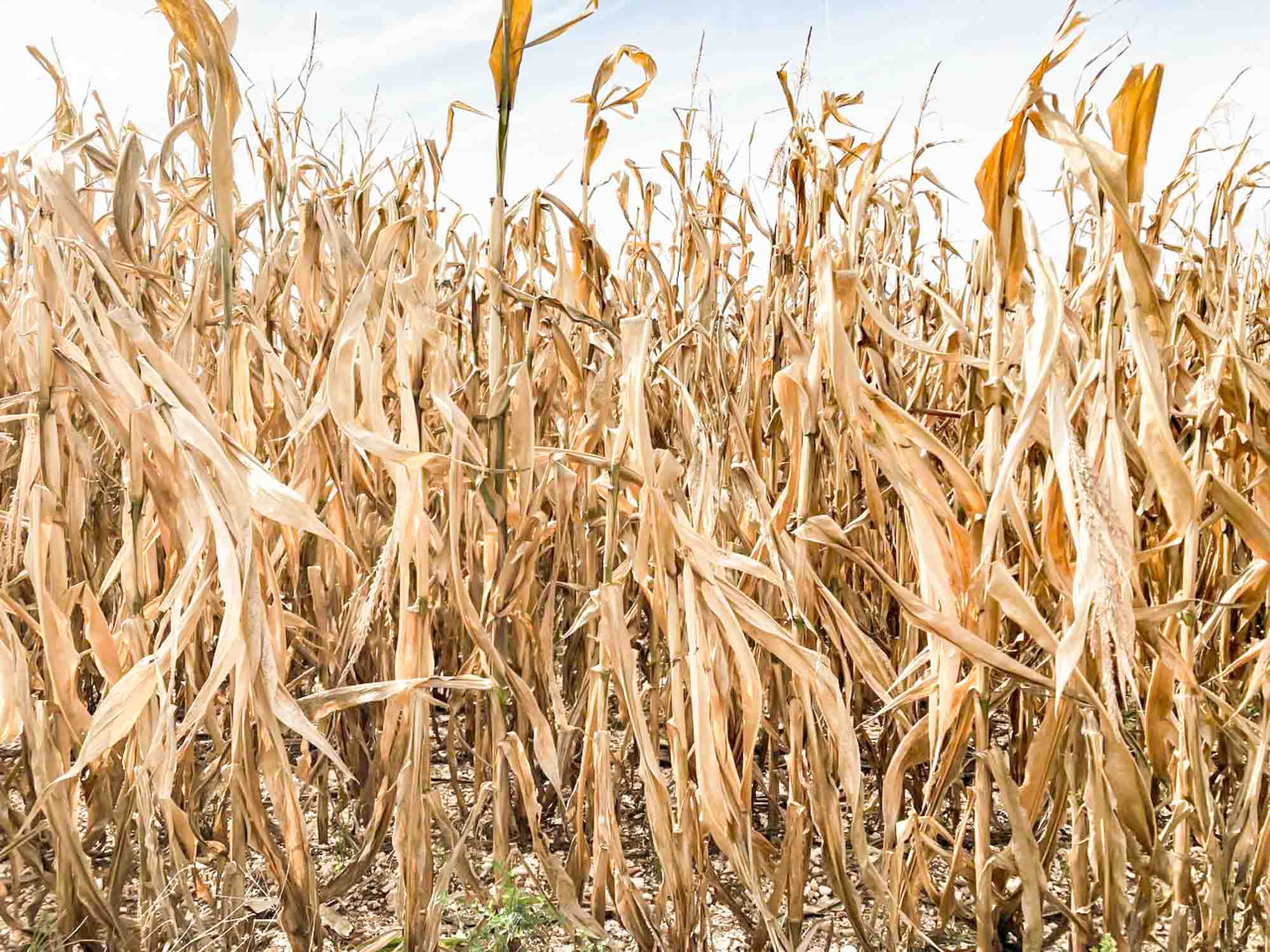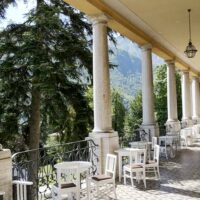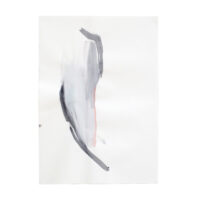Interview with farmer Martin von Mackensen on the current drought in Europe. Questions asked by Wolfgang Held.
How is the Dottenfelder farm doing in regard to the drought?
The grass is brown and dried out, and the farm resembles a steppe, but we were lucky. We were able to harvest so much hay in spring that we can probably get through the winter without reducing the livestock. We also have a surplus of hay from last year, which was wet, that is now helping to us.
After all, as a farmer, you plan ahead. Did you anticipate a drought of this degree?
I, like many other farmers, was aware that we would be facing periods of extreme drought. That’s why it’s important for us on the farm to be able to bring in 80 to 90 percent for the winter with the first cut of grass, which is not affected by drought in our latitudes. Therefore, we were happy when we were able to expand our green areas a few years ago, and increase our ‹feeding bowl› through new leases. The size of our land has grown without increasing the amount of livestock. This is now benefitting us.
Does the way we store gas for winter also apply to every farm in regards to feed?
That is the life cycle in agriculture. The tremendous growth in spring provides food for the winter. In southern countries such as Greece, it’s the other way around. The hay for summer is harvested in winter when it’s warm and rainy.
How do you perceive the dried-out landscape?
Of course, it varies from place to place but one thing is for sure. We are experiencing water shortages and high temperatures throughout Europe. If I also take the last few years into consideration, the alternating periods of drought and heavy rain become evident. This is in accordance with future scenarios portrayed by climate researchers. Extreme conditions will increase, which is already tangible. Nature is being shaken by alternating extreme conditions, so that it doesn’t rain for months followed by long wet or cool periods, like last year. This back-and-forth of extremes can not only be found in nature but also in culture. The middle will get lost if we don’t bring it about ourselves.
What about the situation around the groundwater?
Alarming! We hosted an event at the Dottenfelder farm with Klement Trockner, aquatic ecologist and president of the Senckenberg Society for Nature Research. The topic was how to learn to understand and maintain the earth’s water supply. As a result, it became so much more apparent to me that we can’t separate these worlds of water, rain over the earth, creeks and streams on the earth, and groundwater in the earth, from each other. The small river Nidda flows through our farm. This is a vivid example. The groundwater flows into the body of water and from the body of water into the groundwater. In agriculture, it is important to keep the water in the landscape. This was the Cistercians’ cultural achievement in Central Europe, to shape the landscape from and for the water.
Today, we must learn to really know the groundwater and surface water flows well on our farm. Water is the bearer of life. It is the elixir of possibilities! The Cistercians went to stony, barren, and dry places, and they brought water. In that sense, the fountain in the middle of the cloister, which constantly bears water, is a great image.
We can only maintain and increase soil fertility, which we talk about so much and understand so well in biodynamic agriculture if we manage the water cycles. We will have to develop a form of agriculture that takes an even greater account of this. As practitioners of biodynamics, we are not as far as we could be in this respect. How can evaporation be reduced and irrigation be carried out more efficiently using underground systems?
What effect does this have on breeding?
That is something we can be proud of. In regard to some of our grain varieties, conventional farmers ask us if they also grow these varieties. On a farm that grows varieties from breeder Peter Kunz, a conventional farmer was surprised that the fungal infestation was so deep with the high level of humidity. «You don’t spray your fields, but your wheat looks much better than ours!» We have a different approach because we see breeding as part of agriculture and develop it according to the location. This makes the plants resistant – to drought and large amounts of rain.
Is Biodynamic Agriculture developed for a crisis?
Agricultural scientist Felix von Löwenstein gets to the heart of the issue: «We will live off organically cultivated products, globally or not at all.» In the majority of locations, it is not mineral fertilizers that limit yields, but water or humus. The issue is not slightly different crop rotations, but something completely new or old, like agroforestry: bringing trees onto the fields! It is shameful how little has been achieved in Biodynamics in this respect in recent decades.
Trees for shade and less wind?
Wonderful experiments with trees on fields exist in the south of France. Not only does this yield fruits and wood, but the formation of humus is an additional benefit. Through root formation, CO₂ gets introduced into the soil, into the deeper layers. We can introduce the rain into the landscape using vegetation! The wonderful story by Jean Giono, ‹The man who planted trees›, about the shepherd Elzéard Bouffier, who greened whole areas of land in the south of France so that the rain returned, is more than fiction. Trees on fields also mean establishing a slower life cycle of 50 years, in addition to annual or biennial crops. In a cosmological sense, a delay of this kind means bringing the rhythms of the planets above the sun into agriculture.
The same is true for water: groundwater and surface flows are like the minute and hour hands of a clock – two tempos of life! We really have to relearn to consider the bigger picture. The Rhine’s water takes two days to get from Basel to Frankfurt, though 90 percent of its water involves groundwater flows. These require a very different time scale! Climate change compels us not only to act more broadly and wide-ranged concerning space but also time.
Photo Franka Henn – Translation by Simone Ioannou






Thank you for this beautiful article. Are you in BD familiar with Zack Weiss of Water Stories? His group has developed simple earthen water-retention systems. He has brought these “tailored-to-fit” systems to countries all around the world with tremendous success in bringing water back to the land. Here’s his website: https://www.waterstories.com/about
Thank you, Sharifa! We’re hoping to do an upcoming issue on Water – this is a great initiative to know about!